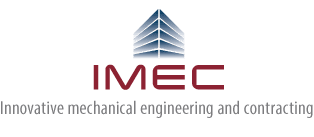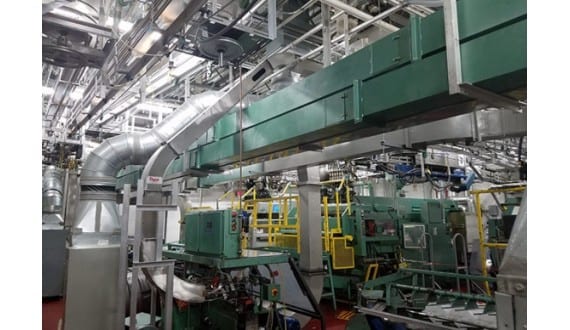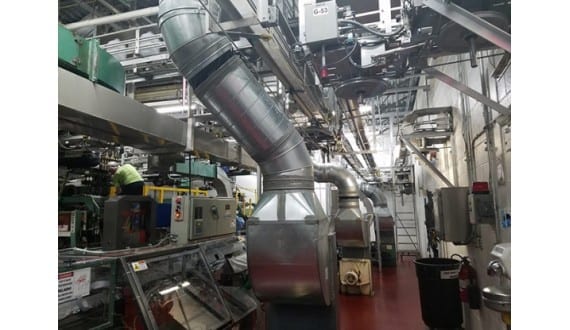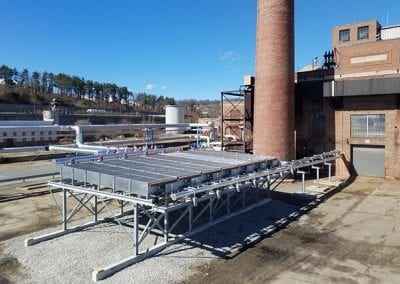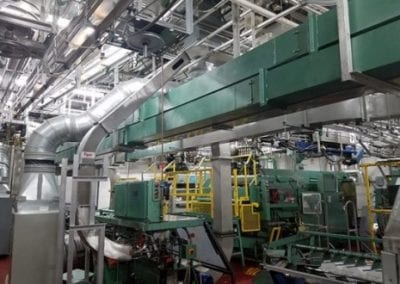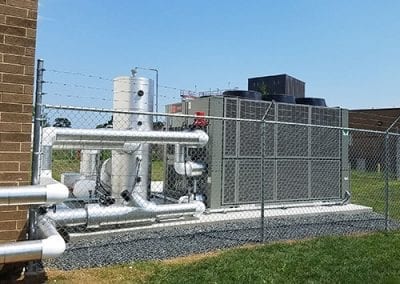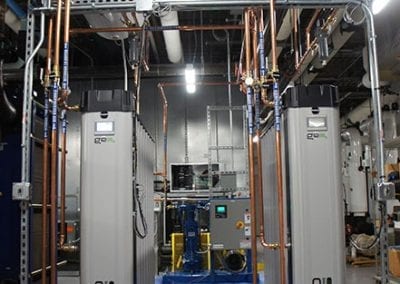Energy Efficiency Case Study
Garelick Farms Improves Blow Molding Production, Saves 385,000 kWh Annually
System Benefits
- Improved air quality
- Higher reliability of production
- Reduced maintenance costs
- Improved operator comfort
- Improved energy efficiency
- Total annual savings:
385,002 kWh = $46,200 per year
Project Challenge
Repeat customer Garelick Farms was interested in addressing airborne contamination and improving ventilation in its blow molding room that housed six molding machines. Each machine had a dedicated conveyance blower to move scrap to a grinding room. The air moved from the grinding room back to the molding room through louvers in the grinding room doors.
Centrifugal fans which moved air from the molding machines to the grinding room had an expected full air flow rate of approximately 14,000 cfm, and operated when the respective blow mold machine was on, which was 52% of the time. The grinding room housed (2) 30 hp grinders, (2) 2hp blowers, (3) 7.5hp vacuum pumps, (1) 30 hp dust collector fan, and (1) 5 hp dust collector fan.
All motor heat from the fans, grinders, and other equipment was sent to the molding room where the load is placed on the plant cooling system.
The molding room was cooled by (5) refrigerant evaporators that were fed from a main ammonia system. This system operates at a lower temperature with an estimated efficiency of 1.5 kW/ton. No make-up air is exhausted from the molding space or the grinding room.
Dust and grinding fines are a source of contamination in the blow mold room, particularly evident on the fin coils of the evaporators. The system also created a significant blowback and pressurization of the pneumatic conveyer system that periodically backed up vents and resulted in broken sprockets and compromised production.
The IMEC Solution
An exhaust and supply system was designed to support the grinding room conveyance system.
Filtration was added to filter the grinding fines on the recirculated air and on the exhaust airflow directed out of the building.
Incorporated into the exhaust/supply air system, an economizer design introduced cooler outside air during winter months to reduce the load placed on the refrigerant evaporators cooling the space.
When any of the molding machines is placed in operation, the grinding room exhaust fan and supply fan activate. The static pressure between the molding room and the grinding room are monitored, and the exhaust fan modulates in speed to maintain equal pressure between the molding and grinding rooms. The louvered doors were replaced with solid doors to prevent air migration.
The supply pressure to the material conveyance fans is also monitored, with the supply fan modulating in speed to maintain static pressure. The supply air temperature to the material conveyance fans is monitored. If the supply temperature falls below 50F, the mixing louvers draw air from the exhaust ducting to mix with incoming ambient air to maintain the proper supply air temperature.
When the ambient temperature falls below 60F, the system goes into economizer mode. The louvers on the fan open and allow ambient air to enter the space, reducing the load on the evaporators.
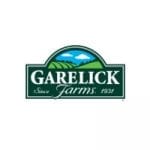
“There are few if any design/build companies like IMEC.”
—Paul DesFosses, Plant Engineer, Garelick Farms
“The guys at IMEC look beyond standard solutions. This project started off as a simple conventional challenge but they devised an approach that solved numerous other problems simultaneously, cutting energy usage and securing a significant utility rebate. There are few, if any, design/build companies like IMEC that take the time to address every detail and ensure that a project resolves exactly as planned.”
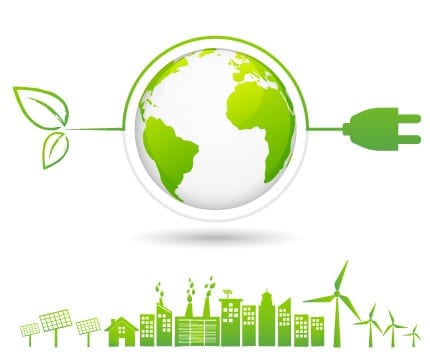
Interested in More Information About How IMEC Can Save Improve Your Energy Efficiency?
Our engineers can dramatically improve your plant efficiency and help you take advantage of utility company rebates to cover a portion of the cost. Learn if our scientific approach to engineering is right for you. Contact us for a complimentary energy efficiency evaluation.
